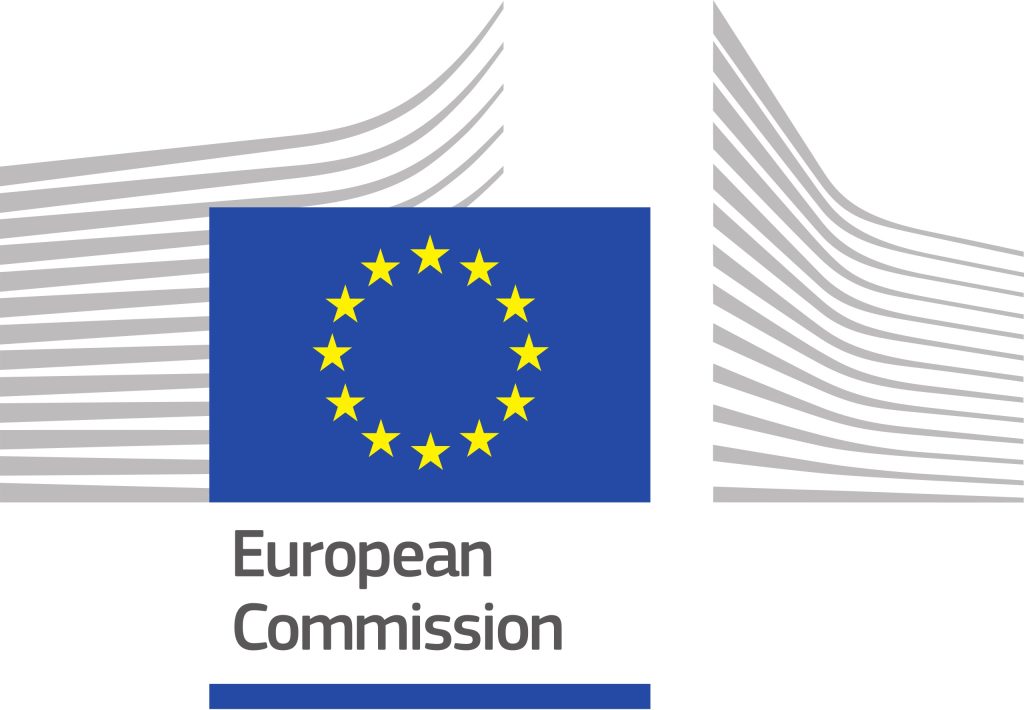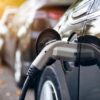
Advanced anion exchange membrane electrolysers for low-cost hydrogen production for high power range applications
Expected Outcome:
Anion Exchange Membrane-water electrolyser (AEMEL) is a promising technology as it has the advantage of reducing hydrogen production costs and fulfilling the requirements of limited resources. In comparison to low-temperature Proton Exchange Membrane Water Electrolysis (PEMEL) there is no need for electrocatalysts comprising platinum-group elements. AEMEL are typically fed with alkaline water, limiting the selection of materials for the various components; however, the production of stable materials, the development of polyfluoroalkyl substances (PFAS)-free membranes and suitable electrocatalysts can be ramped up more easily to satisfy demand than for PEMEL electrocatalysts-materials.
Currently, Europe is leading research and development for AEMELs. As such, it is of crucial importance to maintain this lead and develop new AEMEL stacks enabling the production of pressurised hydrogen. It can be expected to produce hydrogen at 50 bar with future AEMEL stacks at an overall input current density of >1.5 A/cm², with reduced alkaline concentration of <1 mol/L and 0 mg/W of critical raw materials as catalysts as stated in the targets for 2030 in the SRIA of the Clean Hydrogen Partnership. The electricity consumption should not exceed 48 kWh/kg(H2) by 2030 while the capital costs should be as low as 300 €/kW and 600 €/(kg/d) by 2030.
The project should build on the outcomes of previous findings on previous and ongoing EU projects (ANIONE, NEWELY, CHANNEL, HERAQCLES and HYScale).
Project results are also expected to contribute to all of the following expected outcomes:
- Strengthening the European leadership in anion exchange membrane water electrolyser;
- (AEMEL) development, manufacturing and deployment for pressurised hydrogen production;
- Novel short-stack layouts with high power for pressurised AEMEL by 2027 and development of manufacturing processes to produce electrolysers for the upcoming demand;
- Development and implementation in developed stack of next-generation AEMEL materials (Anion exchange membranes, ionomers, electrocatalysts, bipolar plates, porous transport layers, etc.) to achieve higher stability, efficiency and recyclability;
- Increased membrane stability and decreased gas crossover.
Project results are expected to contribute to the following objectives of the Clean Hydrogen JU SRIA:
- Reducing electrolyser CAPEX and OPEX and thus the cost per kg H2, especially by reducing the amount of Critical Raw Materials (0 mg/W; e.g. Co, Ir, Pt) use as electrocatalyst;
- Increasing current density and durability for AEMEL and decreasing footprint;
- Proof of the technology with long test(s) (3,000 h);
- Business model for the scale-up and industrialisation.
Project results are expected to contribute to the following objectives and KPIs for AEMEL of the Clean Hydrogen Partnership SRIA:
- Electricity consumption @ nominal capacity: 48 kWh/kg (2030);
- Capital cost: 600 €/(kg/d) (2030);
- Degradation: below 0.5 %/1,000h (2030);
- Current density: 1.5 A/cm2 (2030);
- Use of critical raw materials as catalyst: 0.0 mg/W (2030).
Scope:
The scope of this topic is to develop the next generation of anion exchange membrane electrolyser stack layout delivering hydrogen at a pressure suitable for industrial end-uses.
It is expected that electrocatalysts will be highly active, with a low-loading of critical raw materials < 0.1 mg/W and used to demonstrate operation at current densities > 1.0 A/cm² at cell potentials below 1.8 V, with alkaline concentrations of <1 mol/l and an electricity consumption below 50 kWh/kg. The temperature at which the applied membrane material properly functions is expected to be lower than 90 ⁰C. To achieve the targets, all components have to be optimised in terms of pressure, chemical and corrosion stability as well as their performance and durability. In particular, new AEMs, low-loading of critical raw materials electrocatalysts and porous transport layer (PTL) structures should be developed, and their implementation in catalyst coated substrate (CCS), catalyst-coated membranes (CCMs) and membrane electrode assemblies (MEA) is expected to be studied.
Targeted prototype scale and cell size should be appropriate for targeted applications and future scale-up. The proposal should target at the end of the project the construction of a stack of minimum 50 kWel with an active area of at least 500 cm² and designed to operate at >50 bars of output pressure. The short stack should exhibit a minimum operation performance of current densities > 1.0 A/cm² at cell potentials below 1.8 V with alkaline concentrations of <1 mol/l. Under these, conditions degradation rates of <0.7 %/1000 h should be demonstrated for a period of at least >3,000 h with the designed stack layout under the stated parameters.
Studies on possible corrosion effects and on degradation mechanism of AEM, anode and cathode electrocatalysts and PTLs should be conducted through EU harmonised testing protocols in order to be able to further predict their lifetime and identify degradation effects.
Proposals are expected to address sustainability, circularity and recycling aspects when choosing AEMs, catalysts, PTL and cell-materials, including bipolar plates. Proposals are expected to perform complete techno-economic and life cycle assessments.
Proposals should show how the developed concepts should be applied in a laboratory setting at a first step, and in a second step how they should be optimised considering the important relevant design and operating parameters (TRL5).
For activities developing test protocols and procedures for the performance and durability assessment of electrolysers and fuel cell components proposals should foresee a collaboration mechanism with JRC (see section 2.2.4.3 "Collaboration with JRC"), in order to support EU-wide harmonisation. Test activities should adopt the already published EU harmonised testing protocols to benchmark performance and quantify progress at programme level.
For additional elements applicable to all topics please refer to section 2.2.3.2.
Activities are expected to start at TRL 3 and achieve TRL 5 by the end of the project - see General Annex B.
The JU estimates that an EU contribution of maximum EUR 4.00 million would allow these outcomes to be addressed appropriately.
The conditions related to this topic are provided in the chapter 2.2.3.2 of the Clean Hydrogen JU 2024 Annual Work Plan and in the General Annexes to the Horizon Europe Work Programme 2023–2024 which apply mutatis mutandis
Specific Topic Conditions:
Activities are expected to start at TRL 3 and achieve TRL 5 by the end of the project - See General Annex B.
General Information
Anion Exchange Membrane-water electrolyser (AEMEL) is a promising technology as it has the advantage of reducing hydrogen production costs and fulfilling the requirements of limited resources. In comparison to low-temperature Proton Exchange Membrane Water Electrolysis (PEMEL) there is no need for electrocatalysts comprising platinum-group elements. AEMEL are typically fed with alkaline water, limiting the selection of materials for the various components; however, the production of stable materials, the development of polyfluoroalkyl substances (PFAS)-free membranes and suitable electrocatalysts can be ramped up more easily to satisfy demand than for PEMEL electrocatalysts-materials.
Currently, Europe is leading research and development for AEMELs. As such, it is of crucial importance to maintain this lead and develop new AEMEL stacks enabling the production of pressurised hydrogen. It can be expected to produce hydrogen at 50 bar with future AEMEL stacks at an overall input current density of >1.5 A/cm², with reduced alkaline concentration of <1 mol/L and 0 mg/W of critical raw materials as catalysts as stated in the targets for 2030 in the SRIA of the Clean Hydrogen Partnership. The electricity consumption should not exceed 48 kWh/kg(H2) by 2030 while the capital costs should be as low as 300 €/kW and 600 €/(kg/d) by 2030.
The project should build on the outcomes of previous findings on previous and ongoing EU projects (ANIONE, NEWELY, CHANNEL, HERAQCLES and HYScale).
Project results are also expected to contribute to all of the following expected outcomes:
- Strengthening the European leadership in anion exchange membrane water electrolyser;
- (AEMEL) development, manufacturing and deployment for pressurised hydrogen production;
- Novel short-stack layouts with high power for pressurised AEMEL by 2027 and - - development of manufacturing processes to produce electrolysers for the upcoming demand;
- Development and implementation in developed stack of next-generation AEMEL materials (Anion exchange membranes, ionomers, electrocatalysts, bipolar plates, porous transport layers, etc.) to achieve higher stability, efficiency and recyclability;
- Increased membrane stability and decreased gas crossover.
Project results are expected to contribute to the following objectives of the Clean Hydrogen JU SRIA:
- Reducing electrolyser CAPEX and OPEX and thus the cost per kg H2, especially by reducing the amount of Critical Raw Materials (0 mg/W; e.g. Co, Ir, Pt) use as electrocatalyst;
- Increasing current density and durability for AEMEL and decreasing footprint;
- Proof of the technology with long test(s) (3,000 h);
- Business model for the scale-up and industrialisation.
Project results are expected to contribute to the following objectives and KPIs for AEMEL of the Clean Hydrogen Partnership SRIA:
- Electricity consumption @ nominal capacity: 48 kWh/kg (2030);
- Capital cost: 600 €/(kg/d) (2030);
- Degradation: below 0.5 %/1,000h (2030);
- Current density: 1.5 A/cm2 (2030);
- Use of critical raw materials as catalyst: 0.0 mg/W (2030).






Advanced anion exchange membrane electrolysers for low-cost hydrogen production for high power range applications 0 reviews
Login to Write Your ReviewThere are no reviews yet.